Papers by Carlos Carpetudo
ARCHITECTURES OF THE SOUL: MULTIDISCIPLINARY APPROACHES, 2022
A virtualização do património tem sido uma ferramenta fundamental para o registo e divulgação do ... more A virtualização do património tem sido uma ferramenta fundamental para o registo e divulgação do património histórico e cultural do concelho de Montemor-o-Novo, durante os últimos cinco anos, através da plataforma Morbase. Os conventos têm, entre outros exemplos de património móvel e imóvel, sido alvo de levantamentos digitais através da fotogrametria terrestre e, mais recentemente, da aerofotogrametria. São disso exemplo os levantamentos 3D executados para o Convento de Nossa Senhora da Saudação e para o Convento de Santa Cruz de Rio Mourinho que, por razões diferentes, o seu levantamento 3D e consequente preservação digital é fulcral para a proliferação do seu conhecimento e valorização.
A Arte Rupestre Da Gruta Do Escoural – Novos Dados Analíticos Sobre a Pintura Paleolítica
Although is generally accepted the attribution of a Paleolithic chronology to the vestiges of pai... more Although is generally accepted the attribution of a Paleolithic chronology to the vestiges of painting discovered half a century ago in Escoural’s Cave, his archaeological study never went beyond stylistic-formal considerations, due the absence of evident archaeological contexts. In the context of a broader approach to analytical observations and records of Escoural art using new available technologies, it was for the first time possible to carry out a set of physic-chemical analyzes on the prehistoric pigments, the results of which are now presented and discussed.
Arqueologia em Portugal 2020 - Estado da Questão - Textos, 2020
The caves of Escoural and Maltravieso are the only caves with Palaeolithic rock art in the Southw... more The caves of Escoural and Maltravieso are the only caves with Palaeolithic rock art in the Southwest Peninsula. These two contexts are similar in their geological characteristics, circumstances of their discoveries, state of conservation, location outside the preferential territorial scope of Palaeolithic art and in the absence of a tradition of scientific research. This set of factors is governed by the need to prioritize the conservation of both cavities in the context of the growing social interest in the first manifestations of rock art. The FIRST-ART project intends to improve the knowledge of both caves taking into account their technical, stylistic and iconographic aspects through multidisciplinary research and the application of new analysis and documentation technologies using digital and 3D

The old parish church of Montemor-o-Novo in the 16 th century - a manuelino example and its virtual reconstruction
2015 Digital Heritage, 2015
Located nowadays in the west zone of the Montemor-o-Novo's Castle, the Igreja de Santa Maria ... more Located nowadays in the west zone of the Montemor-o-Novo's Castle, the Igreja de Santa Maria do Bispo was established there in the first years of the 14th century. The first documented reference to it dates from 1321, when most of the village was still located inside the fortified walls. Once a magnificent building of three naves sustained on fourteen stone columns, today only the ruins of its majestic manuelino style portal and its chapels at the head of the church remain. Around 1524, centuries after the conclusion of the initial architectural works, a new campaign was started on a time when the outskirts of the village of Montemor-o-Novo became more and more its economical epicenter. During the reign of king D. João III of Portugal, this construction campaign implied an almost complete reconstruction under the manuelino renovador style. It is precisely this phase that we are bringing back, via 3D scan and 3D modeling and through a reading of the Archaeology of Architecture of the existing ruins of the Igreja de Santa Maria do Bispo, in Montemor-o-Novo.

Maratona De Arqueologia Virtual No Castro De Monte Mozinho Penafiel Portugal
Escuela de Conservación y Restauración de Bienes Culturales de Madrid, 2019
O presente artigo constitui uma síntese dos resultados da quinta edição da Maratona de Arqueologi... more O presente artigo constitui uma síntese dos resultados da quinta edição da Maratona de Arqueologia Virtual, centrada no Castro de Monte Mozinho (Penafiel). Inserido num projeto mais amplo de valorização patrimonial do qual faz parte o Simpósio de Arqueologia Virtual, este conceito, desenvolvido em Montemor-o-Novo, no âmbito da plataforma Morbase, conheceu uma evolução gradual no sentido de maior complexidade e diversificação de métodos adotados. Através de uma leitura diacrónica, perfila-se o percurso trilhado deste conceito singular baseado no trabalho em equipa e na fusão de conhecimentos e competências dos distintos investigadores, com vista à conceção de conteúdos infográficos e audiovisuais para a compreensão e promoção do bem patrimonial. A segunda parte do artigo, de cariz descritivo, aborda os conteúdos produzidos para documentação deste povoado fortificado na segunda metade do século I/ século II d.C.. Perfila as limitações constatadas, das quais partiram as oportunidades para a conceção de cenários e ambientes representativos do quotidiano doméstico e social deste castro. Não se pretende uma reflexão exaustiva acerca de cinco dias de trabalho intenso e intensivo com vista à produção de uma reconstituição virtual coletiva, este documento pretende relevar a pertinência do trabalho corporativo, muitas vezes alheio ao desenvolvimento de projetos de investigação científica. O Castro de Monte Mozinho conheceu através da Maratona, no centenário da sua valorização científica, um fôlego diferenciado ao nível da difusão e compreensão. Palavras-chave: Arqueologia virtual, valorização patrimonial, reconstituição tridimensional, Castro de Monte Mozinho, maratona de virtualização.
The caves of Escoural and Maltravieso are the only caves with Palaeolithic rock art in the Southw... more The caves of Escoural and Maltravieso are the only caves with Palaeolithic rock art in the Southwest Peninsula. These two contexts are similar in their geological characteristics, circumstances of their discoveries, state of conservation, location outside the preferential territorial scope of Palaeolithic art and in the absence of a tradition of scientific research. This set of factors is governed by the need to prioritize the conservation of both cavities in the context of the growing social interest in the first manifestations of rock art. The FIRST-ART project intends to improve the knowledge of both caves taking into account their technical, stylistic and iconographic aspects through multidisciplinary research and the application of new analysis and documentation technologies using digital and 3D
Arqueología em Portugal. 2020–Estado da Questião, 2020
The caves of Escoural and Maltravieso are the only caves with Palaeolithic rock art in the Southw... more The caves of Escoural and Maltravieso are the only caves with Palaeolithic rock art in the Southwest Peninsula. These two contexts are similar in their geological characteristics, circumstances of their discoveries, state of conservation, location outside the preferential territorial scope of Palaeolithic art and in the absence of a tra�dition of scientific research. This set of factors is governed by the need to prioritize the conservation of both cavities in the context of the growing social interest in the first manifestations of rock art. The FIRST-ART project intends to improve the knowledge of both caves taking into account their technical, stylistic and iconographic aspects through multidisciplinary research and the application of new analysis and documentation technologies using digital and 3D.
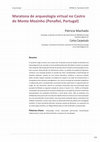
Pátina nº21, 2019
O presente artigo constitui uma síntese dos resultados da quinta edição da Maratona de Arqueologi... more O presente artigo constitui uma síntese dos resultados da quinta edição da Maratona de Arqueologia Virtual, centrada no Castro de Monte Mozinho (Penafiel). Inserido num projeto mais amplo de valorização patrimonial do qual faz parte o Simpósio de Arqueologia Virtual, este conceito, desenvolvido em Montemor-o-Novo, no âmbito da plataforma Morbase, conheceu uma evolução gradual no sentido de maior complexidade e diversificação de métodos adotados. Através de uma leitura diacrónica, perfila-se o percurso trilhado deste conceito singular baseado no trabalho em equipa e na fusão de conhecimentos e competências dos distintos investigadores, com vista à conceção de conteúdos infográficos e audiovisuais para a compreensão e promoção do bem patrimonial. A segunda parte do artigo, de cariz descritivo, aborda os conteúdos produzidos para documentação deste povoado fortificado na segunda metade do século I/ século II d.C.. Perfila as limitações constatadas, das quais partiram as oportunidades para a conceção de cenários e ambientes representativos do quotidiano doméstico e social deste castro. Não se pretende uma reflexão exaustiva acerca de cinco dias de trabalho intenso e intensivo com vista à produção de uma reconstituição virtual coletiva, este documento pretende relevar a pertinência do trabalho corporativo, muitas vezes alheio ao desenvolvimento de projetos de investigação científica. O Castro de Monte Mozinho conheceu através da Maratona, no centenário da sua valorização científica, um fôlego diferenciado ao nível da difusão e compreensão. Palavras-chave: Arqueologia virtual, valorização patrimonial, reconstituição tridimensional, Castro de Monte Mozinho, maratona de virtualização.
SCHEMA I, 2017
By resorting to the new technologies, through the virtualization of our cultural heritage, projec... more By resorting to the new technologies, through the virtualization of our cultural heritage, project Montemor-o-Novo 1534 - which began in 2015 with the virtual reconstruction of the church of Santa Maria do Bispo - aims to virtually rebuild both the intramural space and context of Montemor-o-Novo in the 16th century, now extending to the ancient area of the Alcáçova and Paço dos Alcaides. Once an iconic area of the imposing medieval town, so full of life and buzzing with commercial activities, it is now in a state of ruin at the top of the Castle of Montemor-o-Novo, defying the sands of time.
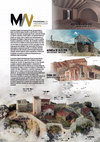
Dibujo Arqueológico: Ciencia, Arte y Técnica - ADARQ, 2018
A iniciativa Simpósio de Arqueologia Virtual, de escala ibérica desde os primeiros passos, assume... more A iniciativa Simpósio de Arqueologia Virtual, de escala ibérica desde os primeiros passos, assume na sua filosofia o conceito inovador de “maratona” de Arqueologia Virtual e onde está inerente um espírito corporativo, interdisciplinar e de desenvolvimento de projetos em equipa, onde os objetivos são simultaneamente as ferramentas de trabalho, a fusão de técnicas, a troca e a partilha de ideias e experiências. Com efeito, não se entende a maratona como meta de um trabalho de valorização patrimonial, mas como uma ferramenta de capacitação de um sítio arqueológico de uma compreensão mais alargada e mais democrática. Procura-se a simplicidade na maneira de transmitir os conteúdos científicos que proporciona cada disciplina, permitindo depois desenvolver conteúdo interativo capaz de mostrar arquiteturas e vivências da antiguidade, sem perder as referências fundamentais que a arqueologia exige na atualidade.
La iniciativa Simposio de Arqueologia Virtual, de escala ibérica desde los primeros pasos, asume en su filosofía el concepto innovador de "maratón" de Arqueologia Virtual. En él es inherente un espíritu corporativo, interdisciplinario y de desarrollo de proyectos en equipo, donde los objetivos son al mismo tiempo las herramientas de trabajo, la fusión de la técnica, el intercambio y el compartir de ideas y experiencias. La maratón no persigue como objetivo único un trabajo de valorización patrimonial, se trata además de una herramienta de capacitación para la comprensión de un sitio arqueológico de manera más amplia y más democrática. Se procura la sencillez en la manera de transmitir los contenidos del conocimiento científico que proporciona cada disciplina, permitiendo desarrollar un contenido interactivo capaz de mostrar arquitecturas y vivencias de la antigüedad sin por ello perder los referentes paramétricos que la arqueología exige en la actualidad.
This project aims to rebuild virtually the small town of Muge (Salvaterra de Magos, Portugal) at ... more This project aims to rebuild virtually the small town of Muge (Salvaterra de Magos, Portugal) at the end of the 17th century, concretely in 1692 when the Duke of Cadaval becomes its jurisdictional owner. For this purpose, all written information, including notarial and parochial records and the most varied documentation in public or private archives, were collected. At the same time, all buildings, vestiges of them, constructive
techniques and archaeological elements that could be applied in the recreation were registered as exhaustively as possible.
Apesar de comumente aceite a atribuição de uma cronologia paleolítica aos vestígios de pintura de... more Apesar de comumente aceite a atribuição de uma cronologia paleolítica aos vestígios de pintura descobertos há meio século na Gruta do Escoural, o seu estudo arqueológico nunca fora além de considerações estilístico‑‑formais, dificultadas pela ausência de contextos arqueológicos seguros. No âmbito de uma abordagem mais alargada de observações e registos analíticos recorrendo a novas tecnologias disponíveis, foi pela primeira vez possível proceder a um conjunto de análises físico‑químicas aos pigmentos pré‑históricos usados no Escoural, cujos resultados agora se apresentam e discutem.
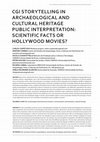
In this roundtable we discuss recent methodological strategies for computer-based archaeological ... more In this roundtable we discuss recent methodological strategies for computer-based archaeological and cultural heritage visualization with and without archaeological and historical narratives. Moreover to examine the qualitative and emotional factors often essential in order to communicate facts deriving from a scientific research. We have welcomed recent projects that made use of CGI techniques in order to communicate to the public the constructed stories, after an archaeological research has been pursued. The final purpose of this session was therefore to open a discussion on the current situation of digital CGI visuali-zation in Cultural Heritage and archaeological practice. The intention was to put together investigators with different background experience in order to approach the issue at various levels and with different perspectives. This has been achieved by inviting to present the work of researchers involved in the study, the construction and the divulgation of different cultural heritage contents. The themes discussed were both theoretical and real project examples, this is because it was necessary to maintain not only a vivid discussion on the principle of past and modern visualization techniques but also on the new accurate surveys and digital reconstruction methodologies that make these final outputs more appreciable by the general public.
Located about two kilometres North of the city of Montemor-o-Novo, the hermitage church of Santo ... more Located about two kilometres North of the city of Montemor-o-Novo, the hermitage church of Santo André do Outeiro has its foundation during medieval times, around the year 1316, as is affirmed by the vicar of the Parish Church of Santa Maria do Bispo, Pedro Botelho do Valle, in the parish memoirs of 1758 (Fonseca, 1985). Although this mention exists in this 18th century document, the remaining documentation is scarce, existing only another document dated from 1468 that mentions the
application and distribution of rents. Until this hermitage church was abandoned, at the ending of the 19th century, no other document is known. During the 20th century, the hermitage church faced the ruin of the majority of its nave and complete ruin of its facade, being also the
target of the implementation of a geodesic landmark on the apse, which still remains there today.
By resorting to the new technologies, through the virtualization of our cultural heritage, projec... more By resorting to the new technologies, through the virtualization of our cultural heritage, project Montemor-o-Novo 1534 – which began in 2015 with the virtual reconstruction of the church of Santa Maria do Bispo – aims to virtually rebuild both the intramural space and context of Montemor-o-Novo in the 16th century, now extending to the ancient area of the Alcáçova and Paço dos Alcaides. Once an iconic
area of this imposing medieval town, so full of life and buzzing with commercial activities, it is now in a state of ruin at the top of the Castle of Montemor-o-Novo, defying the sands of time.
Revealed for the first time in early May 2015 on the 1st Symposium of Virtual Archaeology that h... more Revealed for the first time in early May 2015 on the 1st Symposium of Virtual Archaeology that happened in Portugal, this is still a work in progress of our 3D virtual reconstruction
project for Morbase. For this project a study of the existing ruins was made based on the methodology established by the Archaeology of Architecture. We also took into account two paintings on which the Igreja de Santa Maria do Bispo is represented: one of Pier Maria Baldi in 1669 and another of 1679, author unknown, but present in the current parish church. There are also key documental references in the book of construction works, dated 1534, and in the parish memories of 1758, made by order of the king after the earthquake of Lisbon in 1755, both thoroughly describing the entire
building.
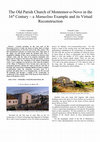
Located nowadays in the west zone of the Montemor-o-Novo’s Castle, the Igreja de Santa Maria do B... more Located nowadays in the west zone of the Montemor-o-Novo’s Castle, the Igreja de Santa Maria do Bispo was established there in the first years of the 14th century. The first documented reference to it dates from 1321, when most of the village was still located inside the fortified walls. Once a magnificent building of three naves sustained on fourteen stone columns, today only the ruins of its majestic manuelino style portal and its chapels at the head of the church remain. Around 1524, centuries after the conclusion of the initial architectural works, a new campaign was started on a time when the outskirts of the village of Montemor-o-Novo became more and more its economical epicenter. During the reign of king D. João III of
Portugal, this construction campaign implied an almost complete reconstruction under the manuelino renovador style. It is precisely this phase that we are bringing back, via 3D scan and 3D modeling and through a reading of the Archaeology of
Architecture of the existing ruins of the Igreja de Santa Maria do
Bispo, in Montemor-o-Novo.
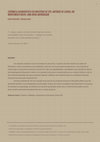
Em completo estado de ruína em meados do século XX, o mosteiro de Santo António de Lisboa em Mont... more Em completo estado de ruína em meados do século XX, o mosteiro de Santo António de Lisboa em Montemor-o-Novo escondia nas suas abóbadas, antes da sua reconstrução arquitectónica, uma colecção de olaria ímpar no panorama nacional do século XVI. Pela sua especificidade e quantidade, esta colecção do Museu de Arqueologia de Montemor-o-Novo é um exemplo único para a compreensão do seu contexto histórico, não só pela representatividade das peças enquanto objectos utilitários mas também pela sua reutilização enquanto elemento de construção arquitectónica.
Durante a década de 70, esta colecção seria alvo de um profundo estudo por Margarida Ribeiro que lhe garantiria também a sua salvaguarda e preservação. Graças aos meios tecnológicos hoje disponíveis e ao avanço do método em arqueologia, acreditamos ser possível aprofundar ainda mais o conhecimento público acerca deste espólio quinhentista fundamental para o estudo da época.
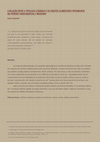
…) a textura dos próprios alimentos difere bastante daquela que hoje se nos apresenta à mesa. Hav... more …) a textura dos próprios alimentos difere bastante daquela que hoje se nos apresenta à mesa. Havia uma marcada preferência pelos «desfeitos» e pelas papas. A presença de peças de carne inteiras, tão do agrado da mitologia cinematográfica contemporânea, seria difícil de admitir à mesa das populações medievais." Santiago Macias, Cláudio Torres RESUMO Ao longo da última década, as escavações arqueológicas no Castelo de Montemor-o-Novo têm revelado um conjunto de estruturas habitacionais junto à porta de Santarém, na parte central da vila, onde se considera que existiria a antiga judiaria montemorense. Neste contexto, têm sido vários os silos encontrados entulhados com vários sedimentos de lixo doméstico. Em 2009, foi encontrado um novo silo , enquadrado dentro de um compartimento de uma habitação de consideráveis dimensões, do qual o espólio cerâmico aqui em estudo é oriundo. A presença de três moedas no interior do silo (apenas duas com leitura) permite-nos atribuir uma datação relativa, contudo com uma baliza cronológica ampla, entre os séculos XIV e XV. Após o processo de análise e restauro do espólio cerâmico, foi possível identificar 15 morfologias diferentes e 152 peças distintas ligadas ao espaço doméstico e que nos permitem chegar a algumas conclusões no que diz respeito aos hábitos alimentares intramuros. Palavras-chave: cerâmica medieval e moderna, Montemor-o-Novo, castelo, hábitos alimentares. 1-Todas as ilustrações arqueológicas deste artigo são da autoria da técnica superior do Município de Montemor-o-Novo, Hermínia Santos. 2-Arqueólogo e sócio-gerente da empresa Cromeleque Lda. 3-TORRES, Cláudio, MACIAS, Santiago, "Consumo Alimentar e Utensílios de Cozinha", in Actas das 2.as Jornadas de Cerâmica Medieval e Pós-Medieval, Tondela, Câmara Municipal de Tondela, 1998, p. 67. 4-silo 1 do compartimento III, da sondagem 2/08.
Talks by Carlos Carpetudo
3º Simpósio Internacional de Arqueologia Virtual, Évora

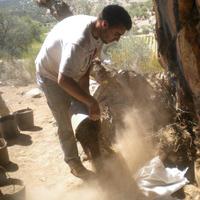


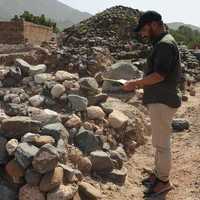



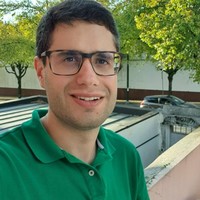
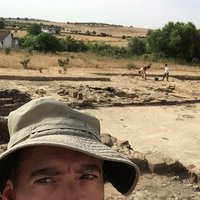

Uploads
Papers by Carlos Carpetudo
La iniciativa Simposio de Arqueologia Virtual, de escala ibérica desde los primeros pasos, asume en su filosofía el concepto innovador de "maratón" de Arqueologia Virtual. En él es inherente un espíritu corporativo, interdisciplinario y de desarrollo de proyectos en equipo, donde los objetivos son al mismo tiempo las herramientas de trabajo, la fusión de la técnica, el intercambio y el compartir de ideas y experiencias. La maratón no persigue como objetivo único un trabajo de valorización patrimonial, se trata además de una herramienta de capacitación para la comprensión de un sitio arqueológico de manera más amplia y más democrática. Se procura la sencillez en la manera de transmitir los contenidos del conocimiento científico que proporciona cada disciplina, permitiendo desarrollar un contenido interactivo capaz de mostrar arquitecturas y vivencias de la antigüedad sin por ello perder los referentes paramétricos que la arqueología exige en la actualidad.
techniques and archaeological elements that could be applied in the recreation were registered as exhaustively as possible.
application and distribution of rents. Until this hermitage church was abandoned, at the ending of the 19th century, no other document is known. During the 20th century, the hermitage church faced the ruin of the majority of its nave and complete ruin of its facade, being also the
target of the implementation of a geodesic landmark on the apse, which still remains there today.
area of this imposing medieval town, so full of life and buzzing with commercial activities, it is now in a state of ruin at the top of the Castle of Montemor-o-Novo, defying the sands of time.
project for Morbase. For this project a study of the existing ruins was made based on the methodology established by the Archaeology of Architecture. We also took into account two paintings on which the Igreja de Santa Maria do Bispo is represented: one of Pier Maria Baldi in 1669 and another of 1679, author unknown, but present in the current parish church. There are also key documental references in the book of construction works, dated 1534, and in the parish memories of 1758, made by order of the king after the earthquake of Lisbon in 1755, both thoroughly describing the entire
building.
Portugal, this construction campaign implied an almost complete reconstruction under the manuelino renovador style. It is precisely this phase that we are bringing back, via 3D scan and 3D modeling and through a reading of the Archaeology of
Architecture of the existing ruins of the Igreja de Santa Maria do
Bispo, in Montemor-o-Novo.
Durante a década de 70, esta colecção seria alvo de um profundo estudo por Margarida Ribeiro que lhe garantiria também a sua salvaguarda e preservação. Graças aos meios tecnológicos hoje disponíveis e ao avanço do método em arqueologia, acreditamos ser possível aprofundar ainda mais o conhecimento público acerca deste espólio quinhentista fundamental para o estudo da época.
Talks by Carlos Carpetudo
La iniciativa Simposio de Arqueologia Virtual, de escala ibérica desde los primeros pasos, asume en su filosofía el concepto innovador de "maratón" de Arqueologia Virtual. En él es inherente un espíritu corporativo, interdisciplinario y de desarrollo de proyectos en equipo, donde los objetivos son al mismo tiempo las herramientas de trabajo, la fusión de la técnica, el intercambio y el compartir de ideas y experiencias. La maratón no persigue como objetivo único un trabajo de valorización patrimonial, se trata además de una herramienta de capacitación para la comprensión de un sitio arqueológico de manera más amplia y más democrática. Se procura la sencillez en la manera de transmitir los contenidos del conocimiento científico que proporciona cada disciplina, permitiendo desarrollar un contenido interactivo capaz de mostrar arquitecturas y vivencias de la antigüedad sin por ello perder los referentes paramétricos que la arqueología exige en la actualidad.
techniques and archaeological elements that could be applied in the recreation were registered as exhaustively as possible.
application and distribution of rents. Until this hermitage church was abandoned, at the ending of the 19th century, no other document is known. During the 20th century, the hermitage church faced the ruin of the majority of its nave and complete ruin of its facade, being also the
target of the implementation of a geodesic landmark on the apse, which still remains there today.
area of this imposing medieval town, so full of life and buzzing with commercial activities, it is now in a state of ruin at the top of the Castle of Montemor-o-Novo, defying the sands of time.
project for Morbase. For this project a study of the existing ruins was made based on the methodology established by the Archaeology of Architecture. We also took into account two paintings on which the Igreja de Santa Maria do Bispo is represented: one of Pier Maria Baldi in 1669 and another of 1679, author unknown, but present in the current parish church. There are also key documental references in the book of construction works, dated 1534, and in the parish memories of 1758, made by order of the king after the earthquake of Lisbon in 1755, both thoroughly describing the entire
building.
Portugal, this construction campaign implied an almost complete reconstruction under the manuelino renovador style. It is precisely this phase that we are bringing back, via 3D scan and 3D modeling and through a reading of the Archaeology of
Architecture of the existing ruins of the Igreja de Santa Maria do
Bispo, in Montemor-o-Novo.
Durante a década de 70, esta colecção seria alvo de um profundo estudo por Margarida Ribeiro que lhe garantiria também a sua salvaguarda e preservação. Graças aos meios tecnológicos hoje disponíveis e ao avanço do método em arqueologia, acreditamos ser possível aprofundar ainda mais o conhecimento público acerca deste espólio quinhentista fundamental para o estudo da época.